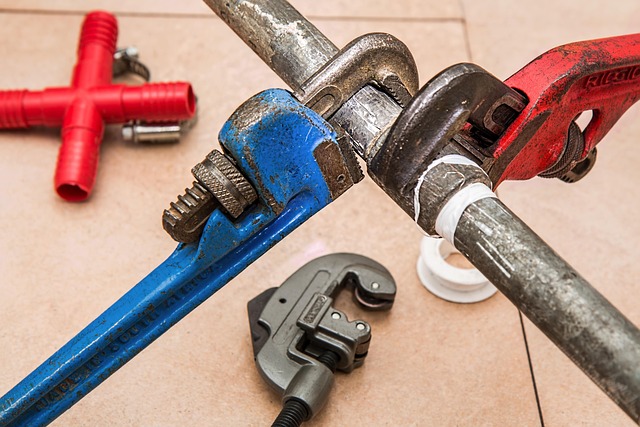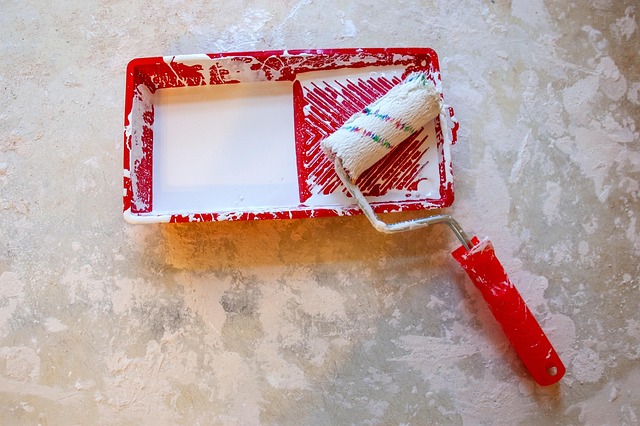Concrete cracks require tailored solutions based on severity and cause, ranging from epoxy injections for minor issues to comprehensive patching and reinforcement for significant structural damage. Assessment involves measuring crack dimensions and patterns. Preparation includes cleaning and safety gear. Epoxy injections and carbon fiber repair address different crack sizes and strengths. Regular maintenance and early intervention prevent future foundation damage, while understanding specific crack types helps determine when to consult a concrete contractor.
Foundation cracks can be both cosmetically unsettling and structurally detrimental. Understanding the causes behind these cracks is the first step towards effective repair, with methods ranging from epoxy injections to carbon fiber wrapping, depending on severity. Safety measures and proper preparation are crucial for successful concrete crack repair. This article explores these aspects, providing a comprehensive guide to addressing foundation crack issues, ensuring longevity for your concrete structures.
Understanding Concrete Crack Causes

Concrete cracks can be both unsightly and structurally concerning. Understanding the causes behind them is a crucial first step in effective concrete repair. There are several factors that contribute to concrete cracking, each requiring tailored solutions. Weather conditions, such as extreme temperatures and freezing cycles, play a significant role, leading to thermal expansion and contraction that stresses the concrete’s structure. Overloading or improper loading of surfaces can also cause cracks, especially in commercial or industrial settings where heavy equipment is involved.
Another common cause is poor initial installation or design. Inadequate mixing of concrete, improper compaction, or settlement over time can all result in weak foundations that are more prone to cracking. Additionally, tree roots and soil movement due to erosion or changes in moisture levels can exert pressure on concrete surfaces, leading to cracks. Identifying the specific cause is essential for selecting the right repair method, whether it’s filling small hairline cracks with epoxy injections or repairing larger structural damage through comprehensive concrete patching and reinforcement techniques.
Types of Foundation Crack Repairs

When it comes to foundation crack repair, there are several methods to address this common issue depending on the type and severity of the cracks. One popular approach for concrete repair is using epoxy injections. This method involves drilling small holes into the cracked area and injecting a mixture of epoxy resin and hardener. The epoxy quickly hardens, filling the crack and providing a strong bond that prevents further damage.
Another effective technique is carbon fiber repair, which is often used for larger cracks. Carbon fiber sheets are attached to the foundation wall using an adhesive, offering a durable and non-permeable barrier. This method not only repairs the crack but also reinforces the structure, enhancing its overall strength and stability. Concrete repair can be tailored to fit various needs, ensuring that any damage is effectively addressed for long-lasting results.
Assessing the Severity of Cracks

When addressing foundation crack repair, assessing the severity of the cracks is a crucial first step. Concrete repair techniques vary greatly depending on the extent of the damage. Small, hairline cracks might only require surface treatments to prevent further erosion, while larger, structural cracks could necessitate more intensive methods such as injection molding or carbon fiber reinforcement.
Inspecting the crack’s width, depth, and pattern can give you a good indication of its severity. Use a level or pencil to measure the crack’s dimensions accurately. Note any signs of ongoing movement or shifting in the foundation walls, as these could indicate more serious structural issues that need professional attention immediately. Proper concrete repair depends on understanding these factors, ensuring long-lasting and effective solutions.
Preparation and Safety Measures for Repair

Before attempting any concrete repair, thorough preparation and safety measures are essential. Begin by clearing the crack of any debris or loose material using a wire brush or chisel to ensure clean access to the damaged area. This step is crucial for proper bonding between the repair compound and the existing concrete, guaranteeing long-lasting results in the Concrete Repair process.
Safety should be at the forefront during this phase. Wear protective gear including gloves, safety goggles, and a respirator mask to shield yourself from harmful dust particles and chemicals. Ensure adequate ventilation in the work area to prevent inhalation of toxic fumes, especially when using epoxy-based products for concrete repair.
Common Methods for Concrete Crack Repair

When it comes to repairing concrete cracks, there are several common methods that can be employed, each offering unique advantages for different scenarios. One of the most popular techniques involves using epoxy injections. This method is particularly effective for small to medium-sized cracks as it fills the gap with a strong, durable material. Epoxy injection not only stops further crack propagation but also provides a solid foundation for any structural support required.
Another widely used approach is carbon fiber repair. Carbon fiber sheets or tapes are applied over the cracked area and bonded with a resin. This method is especially useful for wider cracks as it enhances the overall strength of the concrete, making it a popular choice for both residential and commercial properties. Concrete repair techniques continue to evolve, offering efficient and long-lasting solutions for maintaining structural integrity.
Long-term Maintenance and Prevention Strategies

Regular concrete repair and maintenance are essential to prevent foundation cracks from spreading, which can lead to costly structural damage over time. A comprehensive strategy involves both active care and preventative measures. Start by addressing any existing cracks with an appropriate epoxy injection or filling method to stabilize the structure. Then, implement a regular inspection routine to identify new cracks early on.
For long-term protection, consider sealing and waterproofing your foundation. This can be achieved through various methods like applying protective coatings, using moisture barriers, or installing drainage systems to redirect water away from the foundation. Additionally, maintaining proper soil compaction around the perimeter of your home and ensuring stable ground levels will significantly reduce the risk of future cracks.
When to Call a Professional Concrete Contractor

If you notice small cracks in your foundation, don’t immediately panic. Many minor cracks are normal and may not require professional intervention. However, there are certain signs that indicate it’s time to call a concrete contractor for concrete repair. One of the most significant indicators is when these cracks become wider than 1/4 inch (about the width of a pencil). This could suggest structural damage or ongoing stability issues with your foundation.
Additionally, if you observe cracks that are straight and vertical, or those that radiate from a corner, it’s a red flag. Diagonal cracks often point to settlement issues, which can be more complex to address. Unusually shaped cracks, especially those in patterns or branching shapes, could signal serious problems like heave or sinkage. If you notice any of these signs or the cracks are accompanied by uneven floors, sticking doors, or windows that won’t close properly, it’s best to consult a professional for concrete repair services as soon as possible.
